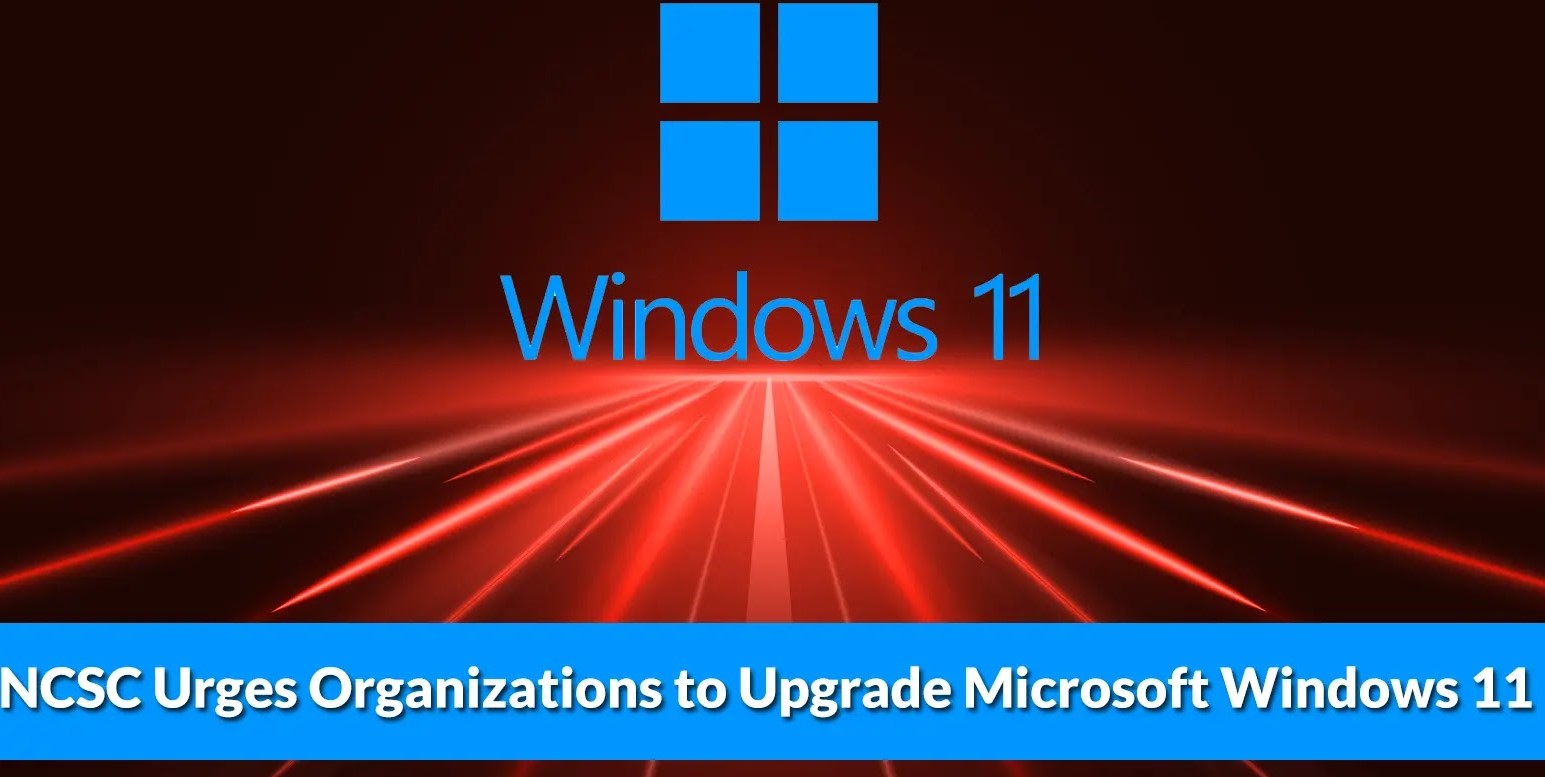
NCSC Urges Organizations to Upgrade Microsoft Windows 11 to Defend Cyberattacks
In the relentless pursuit of digital resilience, a critical directive has emerged from the UK’s National Cyber Security Centre (NCSC): organizations must prioritize the upgrade to Microsoft Windows 11. This urgent advisory underscores a looming cybersecurity threat associated with operating outdated systems, particularly as Windows 10 approaches its end-of-life (EOL) deadline on October 14, 2025. Cyber adversaries are increasingly sophisticated, and maintaining a legacy operating system creates significant vulnerabilities that can be readily exploited.
The Imperative for Windows 11 Adoption
The NCSC’s recommendation is not merely a suggestion; it’s a strategic security mandate. As evidenced by the surge in cyberattacks targeting unpatched and unsupported systems, operating beyond an EOL date exposes organizations to unacceptable levels of risk. Windows 11, with its enhanced security architecture and continuous updates, offers a more robust defense against evolving threats. Organizations that delay this critical upgrade are essentially leaving digital doors open for malicious actors.
Understanding the End-of-Life Nexus
The concept of “end-of-life” for software signifies the cessation of support from the vendor, including security updates, bug fixes, and technical assistance. For Windows 10, this means that after October 14, 2025, any newly discovered vulnerabilities will remain unpatched, creating permanent backdoors for attackers. This period of unsupported operation is a prime target for cybercriminals, who actively scan for systems running EOL software to launch targeted campaigns. The NCSC’s urgency stems from this precise threat vector, aiming to mitigate potential widespread compromise before it materializes.
Key Security Enhancements in Windows 11
Windows 11 introduces a suite of security features that significantly bolster an organization’s defensive posture compared to its predecessor. These enhancements are designed to provide a more comprehensive, layered defense against modern cyber threats:
- Hardware-based Security: Windows 11 mandates technologies like Trusted Platform Module (TPM) 2.0 and Secure Boot, which are fundamental for establishing a hardware root of trust. TPM 2.0, for instance, provides hardware-level protection for cryptographic keys and other sensitive data, making it significantly harder for malware to compromise the system’s integrity.
- Virtualization-based Security (VBS): VBS isolates critical operating system processes from the rest of the OS, safeguarding against memory-based attacks and credential theft. This feature helps protect sensitive data and system resources even if an attacker gains a foothold.
- Microsoft Defender Integration: Windows 11 deepens the integration and capabilities of Microsoft Defender for Endpoint, offering advanced threat protection, automated investigation, and remediation capabilities. This includes next-generation protection, endpoint detection and response (EDR), and vulnerability management.
- Credential Guard and Device Guard: These features prevent unauthorized access to credentials and protect against malicious applications by enforcing code integrity policies, ensuring only trusted applications can run.
The Risks of Maintaining Legacy Operating Systems
Beyond the absence of security updates, running an EOL operating system presents several critical risks:
- Increased Vulnerability Exploitation: As mentioned, unpatched vulnerabilities become permanent pathways for attackers. Consider potential future zero-day exploits (e.g., hypothetical CVE-2025-XXXX) that would never be addressed.
- Compliance Failures: Many industry regulations and compliance frameworks (e.g., GDPR, HIPAA, PCI DSS) mandate the use of supported software and regular security patching. Operating EOL systems can lead to hefty fines and reputational damage.
- Software Incompatibility: As new applications and services are developed, they often drop support for older operating systems, leading to compatibility issues and hindering productivity.
- Reduced Vendor Support: Beyond security, general technical support for EOL products becomes nonexistent, leaving organizations without assistance for troubleshooting and operational issues.
Remediation Actions: Strategic Upgrade Pathways
Organizations should initiate their Windows 11 migration strategy immediately. Here’s a roadmap for a smooth and secure transition:
- Inventory and Assessment: Conduct a comprehensive audit of all existing hardware and software to ensure compatibility with Windows 11 requirements. Identify applications that may not be supported and plan for upgrades or alternatives.
- Phased Rollout: Implement a phased deployment approach, starting with non-critical systems and pilot groups before a wider rollout. This allows for identification and resolution of unforeseen issues.
- Data Backup and Recovery: Before initiating any upgrades, ensure robust data backup and recovery procedures are in place to mitigate potential data loss during the transition.
- User Training: Provide adequate training to end-users on the new interface and any changes in workflow to minimize disruption and maximize adoption.
- Security Configuration Review: Post-upgrade, meticulously review and configure all Windows 11 security features to ensure optimal protection. This includes setting up BitLocker, configuring Windows Hello for Business, and enabling advanced threat protection features in Microsoft Defender.
- Patch Management: Establish a robust patch management strategy for Windows 11 to ensure ongoing security updates are applied promptly.
Tools for Migration and Security Assurance
Several tools can assist organizations in their migration to Windows 11 and in maintaining ongoing security.
| Tool Name | Purpose | Link |
|---|---|---|
| PC Health Check App | Checks device compatibility for Windows 11 upgrade. | Microsoft |
| Microsoft Endpoint Manager (Intune/SCCM) | Unified endpoint management for large-scale deployments, updates, and security configurations. | Microsoft |
| Application Compatibility Toolkit (ACT) | Helps organizations identify and resolve application compatibility issues before deployment. | Microsoft Learn |
| Microsoft Defender for Endpoint | Advanced endpoint detection and response (EDR), vulnerability management, and threat protection for Windows 11. | Microsoft |
Conclusion: Fortifying Your Digital Foundation
The NCSC’s call to upgrade to Windows 11 is a clear signal of the evolving threat landscape. The October 14, 2025 deadline for Windows 10 EOL is not merely a date on a calendar; it’s a critical security vulnerability waiting to be exploited. By proactively migrating to Windows 11, organizations can leverage its enhanced security features, mitigate significant cyber risks, and fortify their digital infrastructure against future attacks. Delaying this essential upgrade is a gamble no organization can afford to take in the current cybersecurity climate. Secure your enterprise today to protect against tomorrow’s threats.





